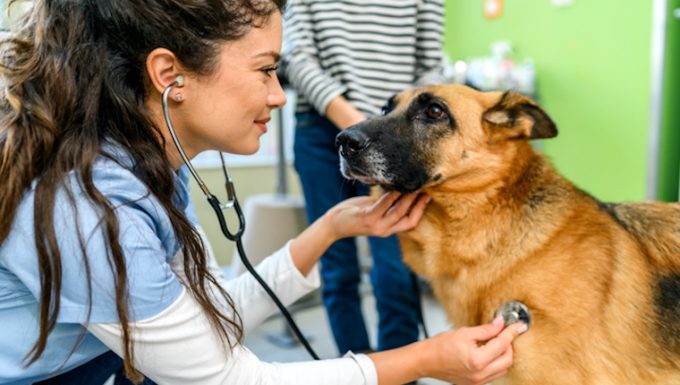Liver and gallbladder cancer in dogs is a condition where a dog develops cancer of the liver and gallbladder at the same time. The cause is often unknown.
Technically, there are six different types of tumors that can be diagnosed.
Unfortunately, Golden Retrievers, German Shepherds, and Labrador Retrievers suffer from the condition more than other breeds.
Additionally, you can learn about liver cancer alone by reading our post here.
If you see the signs of the condition in your dog, then get to a veterinarian for a proper diagnosis and treatment.
Here’s what you should know about the symptoms, causes, and treatments for the condition.
Symptoms of Liver and Gallbladder Cancer in Dogs
The condition produces a wide range of symptoms. For example, some of the most common symptoms include:
- Diarrhea
- Vomiting
- Acting lethargic
- Loss of appetite
- Loss of weight
- Low blood sugar
- Collapse
- Jaundice
- Peeing more than usual
- Drinking more water than usual
- Stomach pain
Causes of Liver and Gallbladder Cancer in Dogs

The exact cause of the condition is often unknown. However, certain breeds seem to develop it more than others. Some of those breeds include:
- Golden Retrievers
- German Shepherds
- Labrador Retrievers
Additionally, there are six types tumors that can be diagnosed as part of the condition. These include:
- Benign
- Malignant
- Focal
- Diffuse
- Primary
- Secondary
Treatments for Liver and Gallbladder Cancer in Dogs
Firstly, your vet will ask about your dog’s symptoms. Secondly, your vet will ask about your dog’s full medical history. This will include breed-specific problems.
Thirdly, a full physical examination will be carried out. During this, your vet will attempt to feel for any tumors while examining your dog’s stomach.
Additionally, blood and urine tests will be taken. Also, tests to check your dog’s blood clotting and bile acid levels will be ordered.
Ultimately, X-rays and ultrasounds can be used to diagnose the condition.
Generally, surgery to remove any tumors will be considered. This can include removing part of your dog’s liver or the entire gallbladder.
Additionally, in some causes chemotherapy can be used.
Also, medication can be prescribed to help your dog’s liver function. As always, if your vet prescribes your dog any medicine, make sure to stick to the correct dose and frequency instructions. Also, complete the full course of medicine.
While recovering at home it is important to provide your dog with a quiet and calm environment. Also, keep up regular visits with your vet to monitor your dog’s recovery and get their blood levels tested.
Have you ever cared for a dog who suffered from this condition? How did your vet help your dog recover? Let us know in the comments section below.









